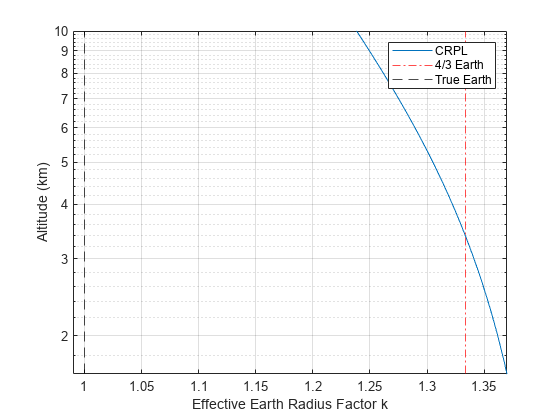effearthradius
Description
Re = effearthradius(atmos)Re of a spherical earth where
atmos is an atmosphere of a
radarScenario
object. The effective radius is computed using the atmosphere and
its associated properties. This syntax generally applies for altitudes less than 2 km. For
more information about the computation, see Effective Earth Radius from Refractivity Gradient.
[
also outputs the effective earth radius factor, Re,k] = effearthradius(___)k. Use this option with
any of the syntaxes described above. See Effective Earth Radius.
Examples
Input Arguments
Output Arguments
More About
References
[1] Doerry, Armin. W. "Earth Curvature and Atmospheric Refraction Effects on Radar Signal Propagation", Sandia National Laboratories, SAND2012-10690, January 2013.
[2] Long, Maurice W. Radar Reflectivity of Land and Sea, 2nd Ed. Artech House, 2001.
[3] Mahafza, Bassem R. Radar Signal Analysis and Processing Using MATLAB, CRC Press, 2009.
[4] Skolnik, Merrill I. Introduction to Radar Systems, Third edition, McGraw-Hill, 2001.
[5] Ward, James. "Space-Time Adaptive Processing for Airborne Radar", Lincoln Lab Technical Report, 1994.
Version History
Introduced in R2022b
